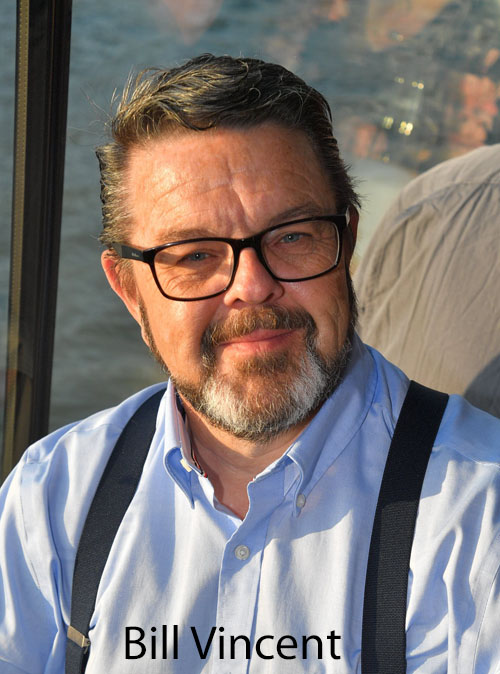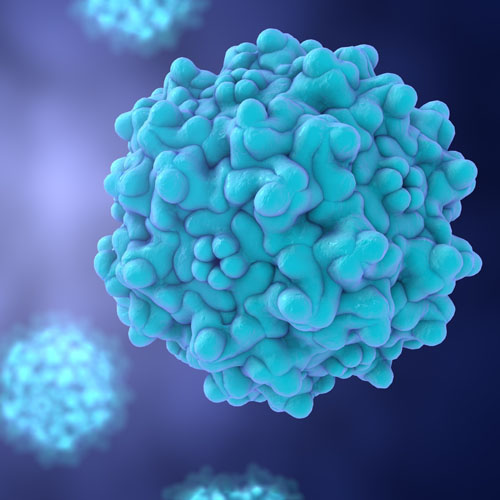This fundament change promises to revolutionise the treatment of diseases — including various cancers — by making advanced therapies more affordable and readily available to a wider patient population.
Although autologous therapies have demonstrated efficacy when treating various indications, their complexity and high costs limit their broader application.
Allogeneic therapies offer the potential to overcome these limitations by paving the way for “off-the-shelf” treatments that could transform the treatment landscape for various diseases.
However, to realise the potential of allogeneic therapies, developers and manufacturers must first overcome challenges ranging from minimising variability to complying with stringent regulatory requirements.
In this article, Bill Vincent, an experienced biotech founder and CEO with extensive experience in the cell and gene therapy (CGT) space, explores the current state and future trajectory of allogeneic cell therapies.
Examining the unique advantages, challenges and emerging trends in this field, Bill provides valuable insights into the potential of allogeneic therapies to revolutionise the cell therapy space.
The remarkable journey of cellular therapies so far
The field of cell therapies has a rich and complex history, marked by both triumphs and setbacks.

These therapies, categorised as either autologous (utilising the patient’s cells) or allogeneic (derived from a donor), have evolved significantly since their inception, paving the way for potential breakthroughs in the treatment of various diseases, including cancer.
Early attempts to harness the therapeutic power of cell therapy date back to 1939, with a reported case of bone marrow injections being used to treat aplastic anaemia.1
This pioneering effort, though rudimentary when comparison with advanced cell therapies of the modern era, laid the groundwork for the further exploration of cell-based therapies.
The 1950s and 1960s saw a surge in research, fuelled in part by the need to address radiation-induced bone marrow damage in the aftermath of World War II. In 1957, the first allogeneic bone marrow stem cell transplant for leukaemia patients was attempted.
Although this initial endeavour faced challenges owing to a limited understanding of histocompatibility, it sparked a wave of research that ultimately led to the development of HLA typing and matching, significantly improving transplant outcomes.2
In 1975, researchers shifted their focus to autologous bone marrow stem cell transplants, utilising the patient’s cells to reduce the risk of graft-versus-host disease (GvHD).3
In the following decades, this approach gained significant momentum, culminating in the first attempt to use gene therapy in humans in 1990: the successful treatment of severe combined immunodeficiency (SCID) using genetically modified autologous bone marrow stem cells.4
This milestone marked a turning point, opening the door for gene therapy applications and eventually leading to the approval of Glybera, the first gene therapy, in 2012.5
The same year also witnessed the emergence of CAR-T cell therapy, with researchers at the University of Pennsylvania reporting the successful use of gene-modified autologous T cells to create a CAR-T remedy to treat leukaemia.6
The promise of allogeneic therapies
Although autologous cell therapies have seen remarkable progress, the field is now refocusing on allogeneic approaches to elucidate more cost-effective therapies, particularly in the realm of cancer treatment.
The highly personalised nature of autologous cell therapies, albeit offering tailored treatment, comes at a steep price. Each treatment requires a complex, patient-specific process comprising cell extraction, modification and reintroduction.
This intricate workflow, coupled with the limited scalability inherent in personalised medicine, translates to high production costs and restricted patient access.
A stark example of this economic challenge is Libmeldy (atidarsagene autotemcel), an autologous gene treatment for the rare disease metachromatic leukodystrophy (MLD), which currently holds the unenviable title of the most expensive therapy globally; a single treatment costs $4.25 million.7

Unlike their autologous counterparts, allogeneic therapies utilise cells from a universal donor, eliminating the need for individualised treatment. This not only reduces the time and cost associated with manufacturing but also enables greater scalability and broader patient access.
As a result, allogeneic therapies can be manufactured in larger batches and stored for immediate use in the future, offering a more streamlined and efficient approach.
If allogeneic CAR-T therapies can achieve the same level of efficacy as their autologous counterparts, the implications to treat diseases such as cancer are immense.
The potential market for these therapies would expand dramatically, making them accessible to a much larger patient population.
This scalability not only improves patient outcomes but also presents a significant return on investment for investors … who are increasingly recognising the potential of allogeneic therapies to address a wider range of diseases.
The prospect of affordable, readily available and highly effective off-the-shelf cell therapies represents a breakthrough in personalised medicine. Although challenges remain in manufacturing and regulatory approvals, the potential benefits for patients and healthcare systems are undeniable.
Overcoming the challenges of allogeneic cell therapy production
Realising the full potential of allogeneic cell therapies will require drug developers and manufacturers to overcome several complexities associated with their production.
Meeting cost efficiency and scalability demands: To achieve widespread accessibility, these therapies must be both cost-effective and available at a scale that meets clinical demand.
Allogeneic therapies demand large-scale production to treat multiple patients from a single batch, entailing significantly higher cell volumes than autologous therapies.
The expansion phase requires sophisticated bioreactors and meticulous batch processing to ensure consistent efficacy and safety while maintaining affordability.
Variability: To ensure the safety and efficacy of allogeneic cell therapies, manufacturers must address variability at multiple levels. At the starting point, donor cells themselves exhibit inherent variability.
Each donor will carry unique genetic and biological characteristics that can influence the performance of the final therapeutic product. Rigorous screening and characterisation of donor cells are essential to minimise this initial variability.
Scaling the manufacturing process further amplifies variability challenges. Larger batches of cells introduce complexities in terms of maintaining consistency, requiring advanced bioprocessing techniques and robust manufacturing platforms.
From cell expansion to genetic modification and final formulation, every step in the process must be meticulously controlled to ensure reproducibility and product quality.
Regulatory challenges: The regulatory landscape for CGTs is stringent, demanding extensive testing and validation to ensure safety and efficacy.
The relative novelty of allogeneic therapies, compared with their autologous counterparts, means that regulatory agencies are still developing a comprehensive understanding of their unique aspects.
This can lead to uncertainties and delays in the approval process. Additionally, logistical challenges, such as maintaining cell viability during transport and managing the complex supply chain, add further complexity to the development and commercialisation of allogeneic therapies.
Overcoming these hurdles requires a multifaceted approach wherein early and thorough process development is paramount.
By investing in robust process development from the outset, companies can avoid costly setbacks during clinical trials and regulatory reviews.
This includes optimising cell expansion and manufacturing protocols, implementing rigorous quality control measures and addressing potential issues related to donor cell variability.
Additionally, close collaboration with regulatory agencies is essential. Open communication and transparency can help to set clear expectations and streamline the approval process.
As regulatory bodies gain more experience with allogeneic therapies, we can expect a more streamlined and efficient framework to emerge, facilitating the development and adoption of these transformative treatments.
Looking to the future of allogeneic therapies and beyond
Looking to the horizon, the CGT landscape is poised for a significant evolution. Whereas autologous therapies have undeniably transformed certain areas of medicine, their personalised nature inherently limits scalability and widespread accessibility.
The next 5–10 years will likely see a notable shift toward allogeneic cell therapies, which promise to overcome these limitations and offer off-the-shelf treatment options for a broader range of disorders.
However, this does not signal the end of autologous therapies. The future landscape will encompass a diverse array of therapeutic modalities, each tailored to specific diseases and patient populations.
For specific indications, such as modifying an individual’s bone marrow stem cells to treat hematopoietic disorders, autologous approaches will therefore likely remain the standard of care.
Beyond the allogeneic versus autologous paradigm, the burgeoning field of in vivo gene editing holds immense potential in the CGT space.
The rapid advancements in gene editing technologies, exemplified by the swift progress of CRISPR from discovery to clinical application within a decade, are indicative of the accelerated pace of innovation in this space.8
With continued research and development, we can anticipate the emergence of universal donor cell lines engineered to circumvent the challenges of GvHD. This could unlock a new era of off-the-shelf allogeneic therapies.
The implications of these advances go beyond cancer treatment. The potential to address degenerative diseases associated with ageing with regenerative medicine represents a transformative frontier in healthcare.
As research progresses, we can anticipate a future in which allogeneic cell therapies, together with cutting-edge gene editing technologies, offer hope for patients with previously untreatable conditions by ushering in a new era of personalised and accessible medicine.
References
- I. Henig and T. Zuckerman, “Hematopoietic Stem Cell Transplantation: 50 Years of Evolution and Future Perspectives,” Rambam Maimonides Med. J. 5(4): e0028 (2014).
- E. Simpson and F. Dazzi, “Bone Marrow Transplantation 1957–2019,” Front. Immunol. 10, 1246 (2019).
- N.C. Gorin, “History and Development of Autologous Stem Cell Transplantation for Acute Myeloid Leukemia,” Journal of Clinical Medicine 10(18), 4015 (2021).
- W.F. Anderson, “Human Gene Therapy,” Science 249(4975), 627–634 (1990).
- S. Ylä-Herttuala, “Endgame: Glybera Finally Recommended for Approval as the First Gene Therapy Drug in the European Union,” Molecular Therapy 20(10), 1831-1832 (2012).
- https://pci.upenn.edu/penn-invented-car-t-cell-therapy-earns-the-word-cure/.
- M. Baker, “The Price of Life-Saving Gene Therapies: A Look at the Costs,” Nature Reviews Drug Discovery 22(9), 613–614 (2023).
- www.oligotherapeutics.org/10-years-of-crispr-developing-a-previously-unimaginable-idea-to-benefit-the-world/.
